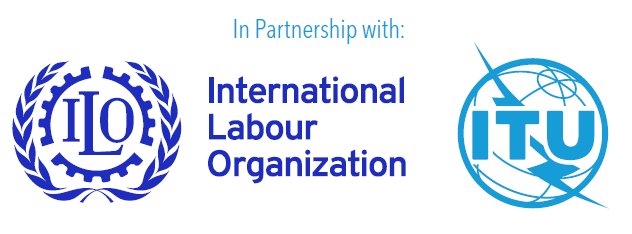2.4 Case study: Good practices in recruitment processes for persons with disabilities in Serbia
I couldn’t wait to get started: Voices from inclusive workplaces in the Republic of Serbia is a good practice guide on the employment of persons with disabilities, written by the Serbian Association of Employers with the support of ILO. It includes an overview of the Serbian legal framework and case studies to help employers understand good practices in the implementation of these obligations and to illustrate the process of recruiting persons with disabilities.
Legal framework: In Serbia, the Labour Code sets out the rights of employed persons with disabilities and employers’ obligations towards all employees, including with regard to the hiring, rights and treatment of employees with disabilities. The Code explicitly prohibits discrimination against employed persons with disabilities. In turn, the Professional Rehabilitation and Employment of Persons with Disabilities Act establishes hiring quotas, under which organizations of 20 to 49 employees must hire at least one person with disabilities, in addition to one further person with disabilities for every additional 50 employees.
Practical steps for recruiting persons with disabilities:
| 1 | Define the essential job requirements, shape the job description according to the necessary skills and competencies, and define any other non-essential requirements by answering the following questions: |
| a | What tasks already exist and why are they being implemented? | |
| b | How are these tasks implemented and how often? | |
| c | How long does it take for employers to create and/or adjust these positions? | |
| d | What knowledge and skills does a person need to carry out this specific task? | |
| e | What skills and competencies does this task require? | |
| f | How necessary is it for this activity to be carried out? | |
| g | Who carries it out? Does it have to be carried out by all employees or can only certain persons carry it out? | |
| h | How important is it to complete the task within a certain deadline and what happens if it is not completed? | |
| i | How are the results measured? |
| 2 | Advertise job vacancies: The National Employment Service is the main public institution that facilitates the recruitment of persons with disabilities in the country, by providing a database in which unemployed persons with disabilities can register as job seekers and a website where employers can post vacancies indicating whether they are open to persons with disabilities. Infostud is another website on which employers can post vacancies that is highly popular among jobseekers with disabilities. Many non-governmental organizations and associations of persons with disabilities (such as the Youth with Disabilities Forum) also actively work with employers by playing the role of an employment service to support the recruitment of jobseekers. |
| 3 | Monitor the selection process: To avoid discrimination, focus on how well a candidate meets the skills and knowledge requirements and not on the type of disability experienced by the candidate. |
| 4 | Interview shortlisted candidates: Ask candidates about their individual needs and the type of accommodations that they may require (such as a fully accessible, ground-floor interview space, an accessible parking space, sign language interpreters, or tests in a specific format). Make sure that candidates: |
| a | are aware that they can request reasonable accommodations; | |
| b | receive reasonable accommodations (unless doing so creates an undue burden); | |
| c | are addressed and talked to directly, regardless of the presence of an interpreter; | |
| d | can ask to repeat a response if the interviewer does not initially understand; | |
| e | are not asked about their actual disabilities. |
| 5 | Finalize recruitment and provide reasonable accommodations: Examples of this include part-time work, job sharing, flexible hours and working from home. |
| 6 | Integrate new hires into the new working environment: Introduce the new employees to their tasks and positions in their team and assign them a mentor. |
